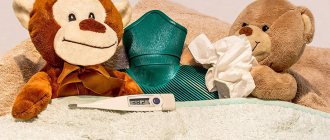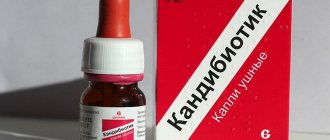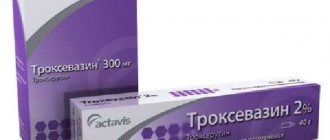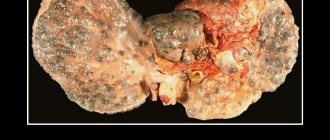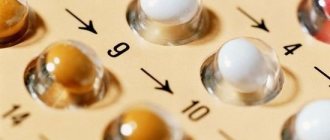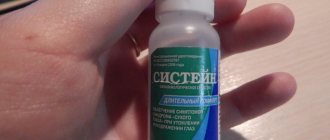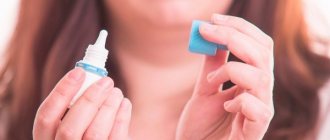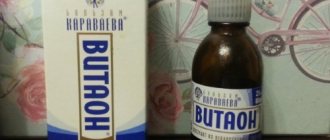There are many causes of ear pain, so for competent and effective treatment, consultation with a doctor is necessary. Self-diagnosis will not help here, and in some cases it can seriously harm. The main method of treatment is drops, which can be selected after an accurate diagnosis has been made.
Ear diseases can be divided into two categories - those that arise as a result of bacteria and fungi entering the auricle, and those that are a consequence of diseases of other organs (throat, nose). The first option is most common. Depending on the composition of the drops, the drug may have different effects.
Based on their action, there are three types of ear drops:
- Antibacterial.
Developed on the basis of antibiotics, designed to destroy bacteria that cause diseases of the hearing aid. - Anti-inflammatory.
They are divided into two categories - steroidal and non-steroidal. The first help eliminate swelling and relieve pain. Non-steroidal, in addition to pain relief and swelling, accelerate metabolic processes. - Combined.
They combine the qualities of the two varieties described above. Their advantage lies in a wide range of actions - from eliminating the cause to relieving symptoms.
Using the antibacterial option, it is important to follow the course of treatment - finishing it too early, you can get rid of pain and obvious symptoms, but you will not be able to completely destroy the pathogenic organisms and the problem will return. Using drops for too long, a person risks “accustoming” the surviving microorganisms to the effects of the drug and the next time he will not be able to cope with them - the bacteria will develop immunity.
Another important criterion to consider is the integrity of the eardrum. Some compounds are strictly prohibited from using if this is violated. Before starting a course of treatment, it is necessary to familiarize yourself with the contraindications and make sure that the membranes are not damaged.
We present the rating of ear drops 2021. The best 12 products that were selected by our experts based on user reviews and ratings.
There are contraindications, be sure to consult your doctor!
| Rating (2019) | Prices, ₽ | A country |
| The best ear drops for adults | ||
| 1. Otinum | from 180₽ | Poland |
| 2. Normax | from 150₽ | India |
| 3. Sofradex | from 300₽ | India |
| 4. Candibiotic | from 270₽ | India |
| 5. Combine | from 380₽ | India |
| 6. Tsipromed | from 125₽ | India |
| The best ear drops for children | ||
| 1. Otipax | from 280₽ | France |
| 2. Polydexa | from 240₽ | France |
| 3. Anauran | from 250₽ | Italy |
| 4. Otofa | from 170₽ | France |
| 5. Otirelax | from 200₽ | Romania |
| 6. Dancil | from 140₽ | India |
Otinum
Otinum helps with middle ear disease
These ear drops most often help with diseases of the middle ear. Dosage: 3 drops. into the sore ear three times a day. Allergic manifestations to this drug are very rare. A contraindication to the use of Otinum is damage to the eardrum, since the medicine contains salicylic acid, which can adversely affect hearing.
Results
In case of ear diseases, it is necessary to notice the first symptoms in a timely manner and undergo an examination as quickly as possible. Only in this case can you avoid the use of drugs with antibiotics and use more gentle means.
Ear diseases occur at any age, and especially often otitis media, eustachitis and other problems plague children under 3 years of age. It is possible to correctly treat pathologies of the hearing organ only under the supervision and prescription of an experienced otolaryngologist, because it is very difficult to independently understand the variety of ear medications.
Medications
All medications are distinguished according to several characteristics:
- active substance (functional);
- quantity (mg, ml – one tablet, ampoule, drop; pieces – pack);
- release form (tablets, injections, drops, syrups);
- manufacturer.
The local therapist and otolaryngologist prescribes medications, their concentration, and duration of treatment. Pain relief and treatment of otitis media are achieved by using the following agents:
- anti-inflammatory;
- antibiotics;
- local anesthetics.
Anti-inflammatory
There are steroidal (dexamethasone, beclomethasone), non-steroidal (choline salicylate, phenazone) anti-inflammatory drugs. They are part of combination medications and reduce swelling, pain, and excess fluid secretion.
Antibiotics
It is recommended to take only after consultation and examination by the attending physician. Antibiotics are prescribed if there is a high temperature, severe pain, deterioration 3-4 days after a viral illness (ARVI, influenza). Be sure to take the entire prescribed course - at least 5-7 days.
Local anesthetic
Analgesic ear drops reduce unpleasant symptoms 1-2 minutes after instillation. The active ingredient is xylocaine (lidocaine). It quickly relieves pain, but does not treat swelling or inflammation.
Sofradex
Candibiotic®
Sofradex drops - for chronic external or acute otitis
Sofradex consists of:
- gramicidin C,
- dexamethasone,
- framecitin.
This composition has a complex effect in the area of the inflammatory process:
- anti-inflammatory,
- antihistamine,
- antibacterial.
Sofradex is prescribed for the treatment of chronic external or acute otitis media.
The course of treatment is a maximum of a week. Dosage: 2-3 drops into the affected ear three times a day.
But there are contraindications to the use of this type of ear drops:
- fungal and viral infection,
- if the eardrum is damaged,
- tuberculosis.
Rating of the best antibiotic ear drops for 2021
Drops for hearing organs differ in composition. There are single drugs and combined drugs (including substances of different types). When consulting with a doctor, you should find out about contraindications and restrictions (age, pregnancy).
Correct use of ear drops is important:
- warming before instillation (2-5 minutes with warm hands, in a water bath);
- after instillation - lie down for 3-4 minutes;
- take the prescribed course.
Combined
Combination drugs have several components - 2 different antibiotics, a corticosteroid against inflammation, an antifungal agent. Convenience, cost savings - performance of several functions, but contraindications and allergic reactions are possible. Most cases are available with a prescription.
Combinil 5 ml eye drops/ear flask/cap
Manufactured by Sentiss Pharma Pvt. Ltd (India). Prescription drug.
The solution is white, light yellow, consists of ciprofloxacin (antibiotic), dexamethasone (synthetic glucocorticosteroid). The bottle is a dropper. Has antibacterial, anti-inflammatory effects. Used in the treatment of infectious diseases of the eyes and ears:
- inflammatory diseases of the eyelids (blepharitis);
- conjunctivitis;
- complications after injuries, operations;
- acute otitis (external, middle - presence of a shunt).
Combinil 5 ml drops
Advantages:
- has a wide spectrum of action;
- quickly relieves signs of inflammation.
Flaws:
- restricted use for pregnant and lactating women;
- cannot be used by children under 18 years of age;
- allergic reactions are possible (itching, dryness, swelling).
Anauran 25 ml
Manufacturer: Zambon S.P.A. (Italy). The dropper bottle is glass, dark in color. Contains 2 antibiotics (polymyxin B, neomycin), local anesthetic (lidocaine). Prescribed for treatment:
- otitis (external, middle);
- purulent complications;
- after operations.
Apply 3-4 times a day, 4-5 drops - warm for 1-2 minutes. The course of treatment is 5-7 days.
Anauran 25 ml
Advantages:
- broad-spectrum antibiotics;
- relieves pain immediately after instillation.
Flaws:
- allergic reactions (peeling, itching of the ear canal);
- The shelf life of an open bottle is 3 months.
Candibiotic 5 ml
Manufacturer: Glenmark Pharmaceuticals Ltd. (India). Contains 4 components:
- Chloramphenicol is an antibiotic.
- Clotrimazole is an antifungal agent.
- Beclomethasone is a corticosteroid against inflammation.
- Xylocaine is a local anesthetic.
Prescribed by ENT specialists for the treatment of various otitis media (acute, chronic forms). Use for 7-8 days, 4-5 drops 2-4 times a day. Cardboard box – dark glass bottle, individual pipette.
Candibiotic 5 ml
Advantages:
- multifunctionality of use;
- improvement of the condition – 3-5 days.
Flaws:
- cannot be used with damage to the eardrum;
- children's age - after 6 years;
- pregnant and lactating women - after consultation;
- price.
Polydexa 10.5 ml
The drug is manufactured (France). It consists of 2 antibiotics (polymyxin B, neomycin), and a corticosteroid hormone (dexamethasone) is present. Prescribed for the treatment of acute, chronic external otitis, eczema of the skin. The solution is light yellow, foaming. Sold in dark glass bottles, an additional dropper is included. Instill 2 times a day, 3-5 drops for adults, 1-2 drops for children. The course of application is 7-10 days.
Polydexa 10.5 ml
Advantages:
- rapid reduction of pain;
- acts on a large number of bacteria;
- low drug adsorption;
- Prescription for children - after consultation with a specialist.
Flaws:
- does not affect bacteria – streptococci;
- local allergic reactions (burning);
- Contraindicated for use by pregnant and lactating women;
- not used in cases of eardrum damage (perforation).
Anti-inflammatory
Agents that relieve inflammation may contain steroids, salicylates, or act independently or together with others (antibiotics, antifungals).
Otinum 2 g 10 ml
Manufacturer: Meda Pharma GmbH and Co.KG (Germany). White polyethylene bottle, transparent solution with a characteristic odor. The active ingredient is choline salicylate (a derivative of salicylic acid). Relieves pain and inflammation in the ear. Appointed:
- otitis (acute, chronic);
- myringitis;
- before surgery to remove wax plugs.
Course – 2-3 days, 3-5 times a day, 2-4 drops.
Otinum 2 g 10 ml
Advantages:
- quickly relieves pain;
- few side effects;
- children's age after 24 months.
Flaws:
- cannot be used if the eardrum is perforated.
Otipax
Manufacturer – Biocodex (France). Contains lidocaine, phenazone (non-steroidal anti-inflammatory drug). Used to treat otitis media and acoustic trauma. A prerequisite is the integrity of the eardrum (adults, children). Apply 3-4 drops 2-3 times a day. Course - 7-10 days.
Otipax
Advantages:
- rapid pain relief;
- relieving inflammation;
- use by pregnant and lactating women;
- childhood.
Flaws:
- allergic reaction (itching);
- price.
Sofradex
Manufactured by Sanofi India Limited (India). Composition – 2 antibiotics (framycetin, gramicidin), corticosteroid hormone – dexamethasone. Indications:
- bacterial eye diseases;
- eczema;
- otitis externa
Instill 2-3 drops, 3-4 times a day. Duration – 5-7 days.
Sofradex
Advantages:
- treatment of eyes, ears;
- low adsorption;
- price.
Flaws:
- addition of a fungal infection (long-term use);
- childhood (infancy, junior);
- pregnancy, breastfeeding.
Antibacterial agents
They contain an antibiotic that acts on a specific type of bacteria. Prescribed by a doctor, prescription drugs.
Ciprofloxacin-Solopharm 0.3% 5 ml
Manufactured by Grotex LLC (Russia). White plastic dropper bottle, transparent liquid. The composition is represented by the antibiotic ciprofloxacin. Affects gram-positive (division period), gram-negative bacteria (rest period, division). Ciprofloxacin is not effective against some bacteria (staphylococci, pseudomonas, clostridia). Prescribed for the treatment of eye diseases (infections, eye ulcers), external otitis media, postoperative complications. Approved for use by children (newborns). Course – 5-10 days, 3-4 drops 2-4 times a day.
Ciprofloxacin-Solopharm 0.3% 5 ml
Advantages:
- treatment of organs of vision and hearing;
- possibility of treating children;
- price.
Flaws:
- selective action;
- storage of an open vial – 28 days.
Dancil 0.3% 5 ml
Manufactured by the Indian company Sentiss Pharma Pvt. Ltd. White plastic bottle with a ready-made pipette. The active ingredient is the antibiotic ofloxacin. Used by ophthalmologists and otolaryngologists for diseases:
- eye infections;
- otitis externa;
- otitis media (acute, chronic);
- complications after operations.
Ofloxacin affects bacteria of the genus Staphylococcus aureus. Escherichia coli, Proteus mirabilis, Pseudomonas aeruginosa. Course – 9-10 days, 5-10 drops 2 times a day.
Dancil 0.3% 5 ml
Advantages:
- Allowed for children over 1 year of age;
- few side effects.
Flaws:
- children's age - up to 1 year;
- pregnancy, breastfeeding;
- shelf life after opening is 45 days.
Otofa 2.6% 10 ml
French manufacturer "Pharmaster". Dark glass bottle, white pipette, orange-red liquid. The active ingredient is rifamycin. Prescribed:
- different types of acute otitis (external, middle);
- exacerbation of chronic hearing diseases;
- operations on the middle ear.
Use in short courses for 3-7 days, 5 drops 3 times a day for adults, 2-3 drops 2-3 times a day for children.
Otofa 2.6% 10 ml
Advantages:
- sensitivity to various bacteria - staphylococci, gonococci, streptococci, mycobacteria;
- does not cause many allergic reactions;
- childhood;
- Possibility of use by nursing and pregnant women.
Flaws:
- careless use of drops – stains on clothes.
Normax 0.3% 5 ml
The drug is manufactured by Ipka Laboratories Limited (India). The active ingredient is the antibiotic norfloxacin. Application:
- conjunctivitis;
- blepharitis;
- otitis (external, middle, internal);
- prevention of postoperative complications.
Actively affects gram-positive and gram-negative bacteria. Anaerobic organisms, Enterococcus spp., Acinetobacter spp. not sensitive to Normax. Used as an additional element of antibacterial therapy along with tablets and injections. Acute form - every 2 hours 2-3 drops. Continue use after symptoms disappear - 48 hours.
Normax 0.3% 5 ml
Advantages:
- treatment of infections of the organs of vision and hearing;
- wide spectrum of action;
- price.
Flaws:
- allergic reactions are possible (rash, itching);
- do not engage in work that requires increased attention for 30 minutes after use;
- age under 18 years;
- pregnancy, breastfeeding.
Preventive measures
Prevention of otitis media involves following a classic set of rules that apply to both children and adults. The main ones among them are:
- Mandatory treatment of seasonal diseases and the use of immunomodulatory agents.
- In the cold season, it is necessary to wear warm clothes and a hat.
- During periods of epidemiological diseases, it is necessary to follow the recommendations of specialists.
- Preventive visits to medical institutions for examination are mandatory and must be carried out according to a schedule, usually once a year.
- Regular walks in the fresh air and ventilation of your home.
The only nuance of such measures is the need for careful monitoring of children, since they cannot bear responsibility for themselves.
Treatment of otitis media with antibiotics in the form of drops has its own nuances and limitations. Means in this category for children and adults have some differences, which can negatively affect not only the treatment process, but also lead to the development of secondary pathologies and diseases. The choice of drug should be made by a specialist, since any contraindications or nuances in use can aggravate the situation and complicate the course of the pathology.
Benefits of using drops to treat ear pain
Drops are a very convenient dosage form for delivering active ingredients directly to the site of infection. The main benefits of treating ear pain with drops include:
- absence of systemic and toxic effects on the body;
- absence or insignificant absorption of the components of the drug;
- local effect (only on the affected part);
- rapid relief of unpleasant signs of otitis media (pain, itching, swelling);
- minimal list of contraindications, side effects;
- economical use (dosing accuracy).
In addition, many ear drops are available from pharmacies without a prescription. Most of them belong to the inexpensive price category.
Who is more likely to have hearing problems?
The human hearing system is a complex labyrinth and internal structure that delivers impulses to the brain. Various diseases of this organ are inevitable.
With the advent of various innovative technologies such as audio amplifiers and headphones, the trend of hearing loss is seen in the younger generation.
Headphones are now considered the main carriers of infections. After all, blockage of the channels maintains a favorable environment for the development of bacteria. Loud and heavy impulses that are sent directly through headphones to the hearing aid can destroy the internal structure. This leads to hearing problems and injuries.
It is also not uncommon for a person whose work involves prolonged exposure to noise to a given organ to see an ENT specialist (workers at a construction site, in a nightclub, etc.)
Swimmers are even more at risk. They are in constant contact with chlorinated water, which can cause inflammation, infectious diseases, congestion, and otitis media.
Contraindications
Adults with normal drug tolerance can use any suitable ear drops for ear pain. If a woman is pregnant or breastfeeding, then many of the antibiotic products will be prohibited. But a drug like Otipax will safely help with ear congestion. Be sure to read the instructions for Otipax for children before use.
With children the situation is more complicated. Many products are not allowed if the child is under one year old, some of them can only be used after 6 years, and some after 12. Let’s give a short overview of ear drops for children with antibiotics, depending on the child’s age
- Otipax - possible from birth;
- Otofa - from the infant period;
- Otinum - from a year;
- Candibiotic - from six years;
- Garazon - from 8 years old;
- Normax - from 12 years old.
We looked at antibiotic ear drops that help with otitis media. The choice of remedies is quite large, however, only a specialist should prescribe drops: antibiotics are not something to joke about. Our advice will help you decide on the right remedy, and the doctor will direct the treatment in the right direction and monitor its progress. We also recommend that you find out whether you can warm your ears if you have otitis media.
Tips before buying drugs
The presence of even minor symptoms of the disease (itching, redness, hearing loss) requires examination by a doctor. The algorithm of actions involves the following steps:
- A consultation with a doctor, a specialist – an otolaryngologist is required.
- Specify the name of the drugs and active ingredients.
- Explore the range of nearby online pharmacies (price – budget, manufacturer).
- Pay attention to the shelf life and quality certificate.
- Ease of use is important (presence of a pipette, convenient bottle shape).
- The main rule is that you should not self-medicate, which can lead to serious complications.
Which ear drops are best to buy?
Medicines for the treatment of otitis must have a rapid effect, be able to instantly relieve pain, and also completely remove the cause of inflammation. Among the entire rating presented, there are several drugs that produce an immediate effect and make adults and children feel better:
- Otofa is a remedy for quick pain relief;
- Combinil - drops against acute and chronic otitis in adults;
- Otirelax is a drug for the treatment of otitis, has no side effects;
- Anauran is an antibiotic for eliminating otitis media in children;
- Tsipromed is an antibacterial medication for the treatment of ear inflammation in children.
Medicines for the treatment of otitis must contain a strong active ingredient that not only relieves pain, but also prevents the development of bacteria and viruses.
Diagnosis of ear diseases
Diagnostics includes general clinical blood and urine tests, an appointment with a therapist, as well as otorhinolaryngological tests:
- otoscopy;
- tuning fork research;
- audiometry;
- determination of patency of the Eustachian tubes.
Price
The cost of drugs is determined by the manufacturer, pharmacological action and place of purchase. The cheapest include boric acid and hydrogen peroxide solution. Inexpensive drugs are Ciprofloxacin, Auridexan, Norfloxacin. Sofradex, Othiorelax, Otinum drops are available to the general population. Their cost is slightly higher compared to others. You can find out more about the prices of different ear drops from the table.
| Place of purchase | Name of medicine | Bottle volume | Price, rubles |
| Pharmacy IFC | Sofradex | 5 ml | 300,1 |
| Otipax | 15 ml | 224 | |
| Otinum 20% | 10ml | 231 | |
| Polydexa | 15 ml | 308 | |
| Candibiotic | 5 ml | 293 | |
| ZdravZone | Sofradex | 5 ml | 259 |
| Otipax | 16 g | 197 | |
| Otinum 20% | 10ml | 192 | |
| Candibiotic | 5 ml | 223 | |
| Polydexa | 15 ml | 277 | |
| piluli.ru | Anauran | 25 ml | 306 |
| Otinum | 10 ml | 229 | |
| A-cerumen | 40 ml | 486 | |
| Tsipromed | 10 ml | 155 |
Features of otitis media
Otitis media is an inflammatory process of the human hearing system. Its occurrence is associated with infection through the ear canals or the Eustachian tube. Depending on the nature of the inflammatory process identified in the patient, it can be characterized as:
- serous;
- catarrhal;
- purulent.
According to the location of the ear, otitis media is also divided into:
- interior;
- outer;
- average.
In this case, otitis media can occur in both unilateral and bilateral forms of the inflammatory disease. Depending on the duration of the presence of the inflammatory focus, the disease can gradually move from acute to chronic form. Usually, when determining the form of the disease, they are guided by the following periods: acute form up to 3 weeks, subacute form up to 3 months and chronic form for periods over 3 months.
